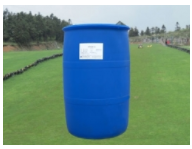Anionic surfactants are common soap groups in Japanese cleansers. I believe that many people often see the word "soap base" and often hear people say not to use soap base cleanser, because it is not gentle, but what is soap base? This has to start from the chemical reaction formula of making "soap": fat + alkali = soap + glycerin. Here we generally think that fat is fatty acid glyceride. In the alkaline condition, the sodium fatty acid produced by heating hydrolysis is soap.
We will expand the scope of this fatty acid sodium. Long chain carboxylic acids such as lauric acid (dodecanoic acid), myristic acid (tetradecanoic acid), palmitic acid (hexadecylic acid, palmitic acid, cetacean acid), stearic acid (octadecanoic acid) and sodium hydroxide, potassium hydroxide form the monovalent sodium XXX or potassium XXX, which is commonly known as the soap group.

Betaine and betaine surfactants are the common amphoteric surfactants used in cleaning products. The so-called amphoteric surfactants have both cationic and anionic hydrophilic groups in the molecule and are amphoteric in the neutral medium. Basically, betaine surfactants can be mixed with any other kind of surfactants. Its basic molecular structure is composed of quaternary ammonium type cations and carboxylic acid type anions (usually). Forgive me for being lazy and not drawing this formula.. I think if I do, everyone will be dizzy.
Although there are many kinds of surfactants with different functions, their molecular structure has a common feature, that is, they are all composed of hydrophilic group and lipophilic group (or hydrophobic group). The hydrophilic group can combine with water molecules to make the surfactant soluble in water. It can also be said that the water solubility of surfactants mainly depends on the number, strength and The connection position also depends on the proportion of hydrophilic group and lipophilic group in the molecular structure. For surfactant molecules, common hydrophilic groups mainly include carboxylic acid group, sulfonic acid group, sulfuric acid ester group, hydroxyl group, ether group, amino group, polyoxyethylene group, etc. The lipophilic group can make the lost active agent dissolve in the oil. The common lipophilic group mainly includes the aliphatic alkyl (such as dodecyl, octadecyl), aryl (such as phenyl, naphthyl) and alkyl aryl (such as butylenaphthalene, Dodecylbenzene).
It is precisely because of the amphiphilic (hydrophilic and lipophilic) structural characteristics of surfactants that they can change the surface (or interface) activity of substances, thus producing a practical feature. For example, surfactant can dissolve in water and oil at the same time or mix oil and water through its "bridging" function, so as to play the role of emulsification, decontamination and wetting. In addition, surfactant can also promote the separation and comminution of solid particles, and make them evenly dispersed in the liquid; it can also make the air dispersed in the liquid to form foam and keep stable without breaking.